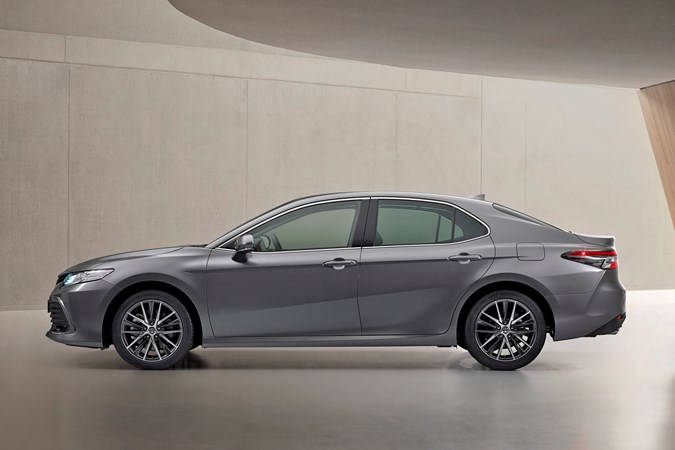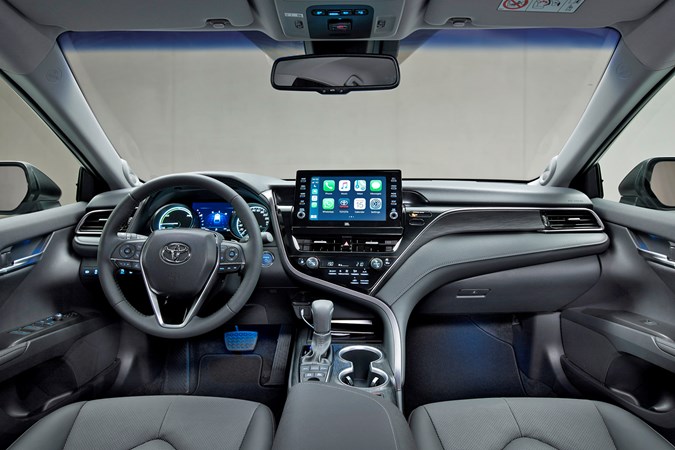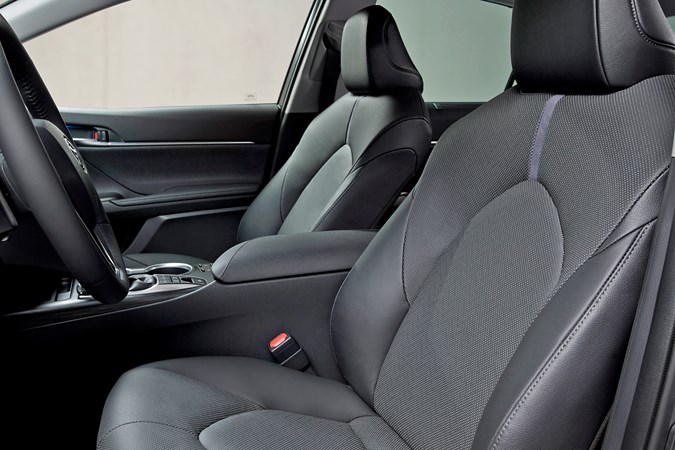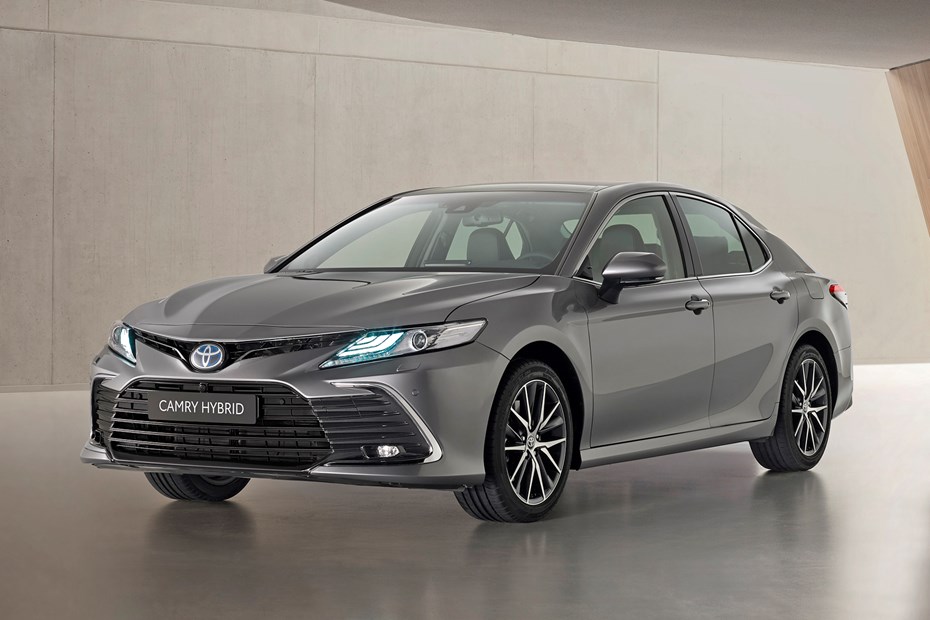One of the world’s best-selling cars it may be, but the reception the Toyota Camry has had in the UK since it was relaunched here in 2019 has been lukewarm at best. Not all that surprising given it’s a four-door saloon in a market where SUVs are ruling the roost.
Undeterred, Toyota has announced a series of small upgrades for the Camry that might help it become that little bit more attractive for those looking for a fuel efficient four-door.
What has changed about the Camry’s looks?
Car facelifts tend to fall into one of three categories: substantial ones that almost make the result look like a new car, moderate examples where you can easily identify the fresh components and the blink-and-you’ll-miss-it variety. The Camry’s makeover is definitely of that latter type.

In fairness, the Camry was reintroduced here in the guise of a substantial facelift of the eighth-generation model, so Toyota’s forgiven for its light touch approach in this instance.
Keen spotters will notice that there’s a new front bumper, incorporating a revised grille shape, with metal-look finishes to the trim pieces on the outer edges.
Whether you go for a model with 17- or 18-inch alloy wheels, you will also find that these are of a different design, both featuring twisted spokes and a two-tone finish on the larger rims.
Is the Camry different inside?
While the curvy architecture of the Camry’s dashboard design remains unchanged, there’s a modification to the central control area which sees the multimedia screen and the air vents swap positions.
Not only that, the enlarged touchscreen – it’s now 9.0 inches – stands proud in a tablet-style arrangement, rather than being set within the dash itself.

Toyota promises that not only is the screen more responsive, but the operating software runs more quickly. A further welcome development is that both Android Auto and Apple CarPlay are supported. At last!
As with the outside, further changes are limited in scope: there are new wood-effect and metal-look trim inserts, plus a herringbone pattern for the ventilation holes on the leather seats. Even Toyota loyalists are going to struggle to muster much excitement about that.
Even safer than before
Although it hasn’t been independently crash-tested by the experts at Euro NCAP, the Camry has performed strongly in similar checks around the world.
While Toyota’s Safety Sense package was previously fitted as standard, it’s now been bolstered by the addition of new elements, including:
- Lane Trace Assist – gently turning the steering wheel when the car detects its wandering from the centre of the lane
- Intelligent Adaptive Cruise Control – adds to the existing adaptive cruise system by picking up speeds from road signs and adjusting accordingly
- Emergency Steering Assist – senses when the car is going to collide with an object, such as the central reservation barrier, and automatically steers away from it
- Intersection Turn Assistance – monitors for vehicles and pedestrians when manoeuvring at junctions
What this means for you
Relatively minor changes in the grand scheme of things they may be, but they add a little more lustre to the Camry’s package.
It’s one that appeals, but to a small number of potential buyers – those who want a large and efficient four-door without the expense of an upmarket badge attached to it.

As such, the Toyota’s chief rivals are the hybrid Ford Mondeo Saloon and the plug-in hybrid Volkswagen Passat GTE Saloon – perhaps the Camry’s relative rarity will also add to its appeal.
Given there have been no changes announced about the hybrid system, we expect the most efficient version to continue to produce 120g/km of CO2 and be in the 27% band for Benefit-in-Kind company car taxation.
Prices will be announced shortly before deliveries of the refreshed Camry begin in spring 2021, but we envisage the least expensive version to remain just under £31,000.
Further reading:
- Read our full Toyota Camry review to see what we think of this large saloon
- Find out more about Toyota’s large, hybrid SUV – the Highlander
- Ready to sell your car? Find out how much it’s worth with Parkers

Just so you know, we may receive a commission or other compensation from the links on this website - read why you should trust us.












